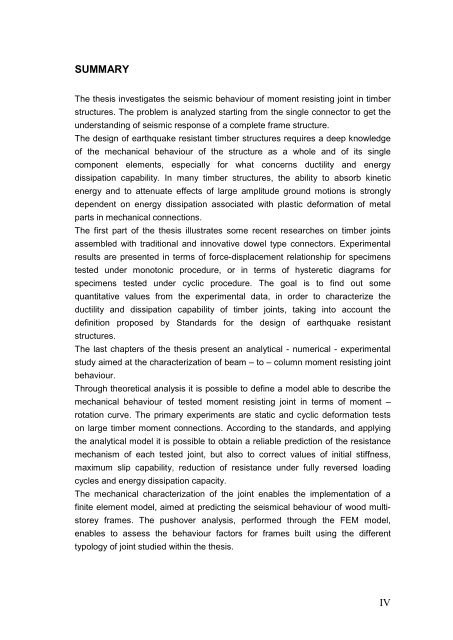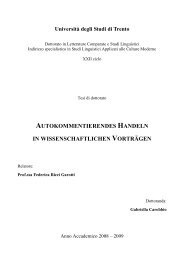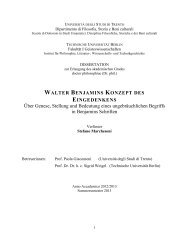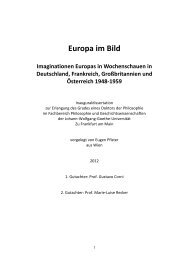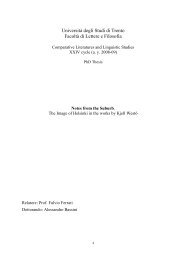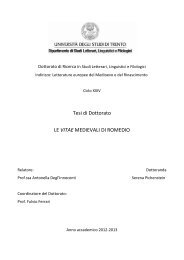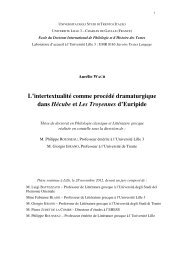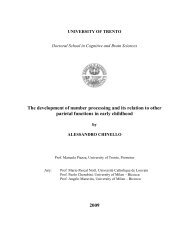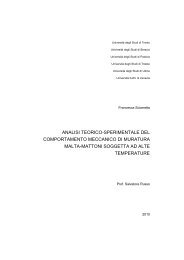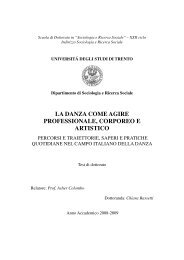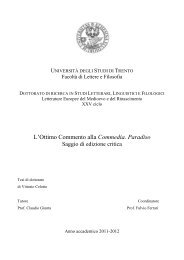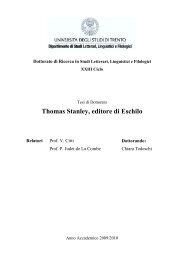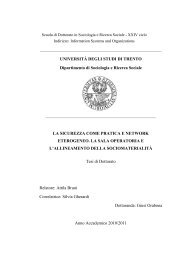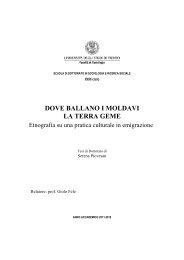caratterizzazione del comportamento di giunti semirigidi per strutture ...
caratterizzazione del comportamento di giunti semirigidi per strutture ...
caratterizzazione del comportamento di giunti semirigidi per strutture ...
Create successful ePaper yourself
Turn your PDF publications into a flip-book with our unique Google optimized e-Paper software.
SUMMARY<br />
The thesis investigates the seismic behaviour of moment resisting joint in timber<br />
structures. The problem is analyzed starting from the single connector to get the<br />
understan<strong>di</strong>ng of seismic response of a complete frame structure.<br />
The design of earthquake resistant timber structures requires a deep knowledge<br />
of the mechanical behaviour of the structure as a whole and of its single<br />
component elements, especially for what concerns ductility and energy<br />
<strong>di</strong>ssipation capability. In many timber structures, the ability to absorb kinetic<br />
energy and to attenuate effects of large amplitude ground motions is strongly<br />
dependent on energy <strong>di</strong>ssipation associated with plastic deformation of metal<br />
parts in mechanical connections.<br />
The first part of the thesis illustrates some recent researches on timber joints<br />
assembled with tra<strong>di</strong>tional and innovative dowel type connectors. Ex<strong>per</strong>imental<br />
results are presented in terms of force-<strong>di</strong>splacement relationship for specimens<br />
tested under monotonic procedure, or in terms of hysteretic <strong>di</strong>agrams for<br />
specimens tested under cyclic procedure. The goal is to find out some<br />
quantitative values from the ex<strong>per</strong>imental data, in order to characterize the<br />
ductility and <strong>di</strong>ssipation capability of timber joints, taking into account the<br />
definition proposed by Standards for the design of earthquake resistant<br />
structures.<br />
The last chapters of the thesis present an analytical - numerical - ex<strong>per</strong>imental<br />
study aimed at the characterization of beam – to – column moment resisting joint<br />
behaviour.<br />
Through theoretical analysis it is possible to define a mo<strong>del</strong> able to describe the<br />
mechanical behaviour of tested moment resisting joint in terms of moment –<br />
rotation curve. The primary ex<strong>per</strong>iments are static and cyclic deformation tests<br />
on large timber moment connections. Accor<strong>di</strong>ng to the standards, and applying<br />
the analytical mo<strong>del</strong> it is possible to obtain a reliable pre<strong>di</strong>ction of the resistance<br />
mechanism of each tested joint, but also to correct values of initial stiffness,<br />
maximum slip capability, reduction of resistance under fully reversed loa<strong>di</strong>ng<br />
cycles and energy <strong>di</strong>ssipation capacity.<br />
The mechanical characterization of the joint enables the implementation of a<br />
finite element mo<strong>del</strong>, aimed at pre<strong>di</strong>cting the seismical behaviour of wood multi-<br />
storey frames. The pushover analysis, <strong>per</strong>formed through the FEM mo<strong>del</strong>,<br />
enables to assess the behaviour factors for frames built using the <strong>di</strong>fferent<br />
typology of joint stu<strong>di</strong>ed within the thesis.<br />
IV


